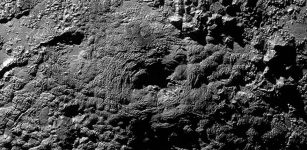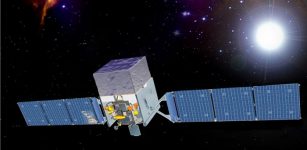TODAY: 35th Anniversary Of The Voyager 1 Saturn Flyby
MessageToEagle.com – On November 12, 1980, 35 years ago, Voyager 1 became the second spacecraft to flyby Saturn.
Its main objectives were to conduct close-up studies of Jupiter and Saturn, Saturn’s rings, and the larger moons of the two planets. Built to last 5 years, the spacecraft is in interstellar space today and still operating 38 years after launch.

Voyager 1 launched on September 5, 1977, on a short and fast trajectory toward Jupiter and Saturn aboard the Titan-Centaur III expendable rocket. At the time, our solar system’s outer planets were in a rare geometric arrangement, which only occurs about every 175 years. The advantage of this alignment, is that it allows a spacecraft to swing from one planet to the next without the need for large onboard propulsion systems, also known as the gravity assist technique.
It found that Titan has a thick atmosphere, which hides its surface from visible-light cameras and telescopes trying to obtain images. In addition, it found that Titan’s atmosphere was mostly composed of nitrogen like the Earth; however, its surface pressure is 1.6 times as high as Earth’s.

Similarly, it found Saturn’s upper atmosphere to be composed of 7% helium and the rest mostly made up of hydrogen. Scientists inferred that because of Saturn’s atmospheric composition, Saturn radiates more heat than what it receives from the sun. Voyager 1 also discovered the G-rings of Saturn.
The goals of the new mission were to collect data on the heliopause boundary, the outer limits of the sun’s magnetic field, and the outward flow of solar wind.

The disc also contains electronic information that an advanced technological civilization could convert into diagrams and photographs.
Voyager 2 flew by Saturn in August 1981 and the next mission to Saturn was an orbiter that arrived in 2004. The Cassini probe was designed to explore Saturn’s atmosphere, rings, magnetosphere, and moons. It has successfully found geysers on Saturn’s moon Enceladus, evidence that its moon Titan is Earth-like, and Saturn’s rings are active and dynamic.
In 2016, Cassini will embark on The Grand Finale where it will fly between Saturn and its rings 22 times, the closest it has ever been to the planet. This more hazardous research will help us learn about Saturn’s gravity and magnetic fields, its rotation, and the composition of its rings. At the end of The Grand Finale, Cassini will plunge into the atmosphere of Saturn and be destroyed.
This step will make sure that the Cassini probe does not accidentally crash on one of the moons of Saturn and (perhaps) contaminate it with microbes from Earth.










